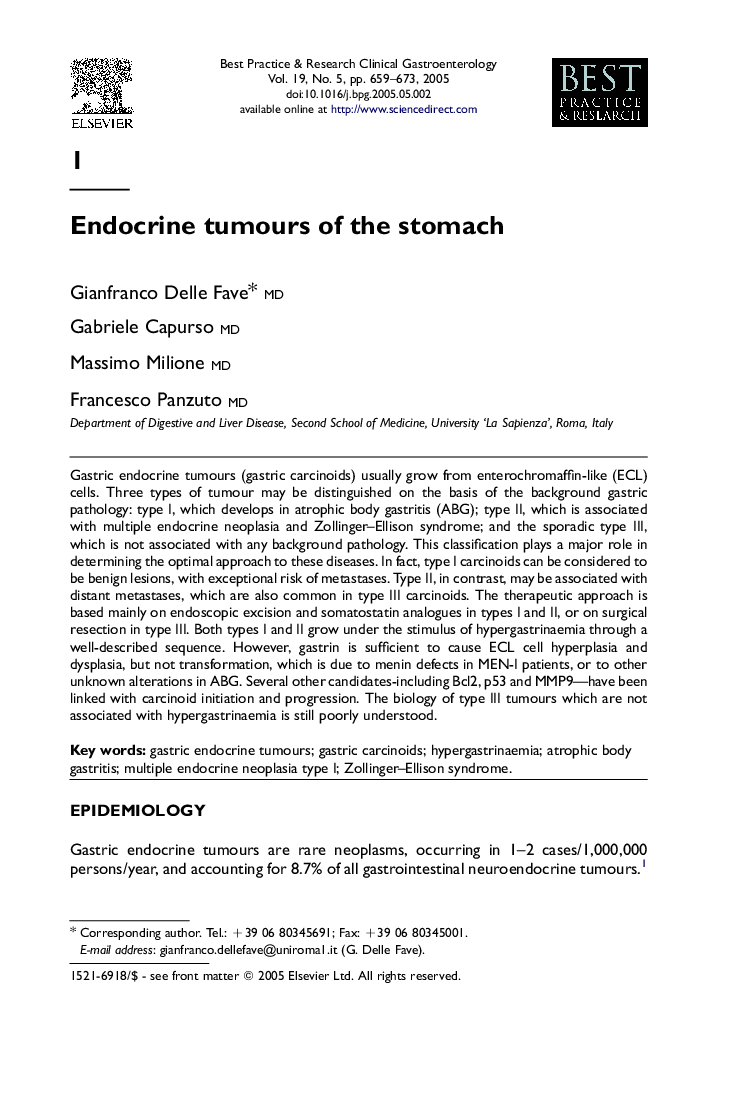| Article ID | Journal | Published Year | Pages | File Type |
|---|---|---|---|---|
| 9236336 | Best Practice & Research Clinical Gastroenterology | 2005 | 15 Pages |
Abstract
Gastric endocrine tumours (gastric carcinoids) usually grow from enterochromaffin-like (ECL) cells. Three types of tumour may be distinguished on the basis of the background gastric pathology: type I, which develops in atrophic body gastritis (ABG); type II, which is associated with multiple endocrine neoplasia and Zollinger-Ellison syndrome; and the sporadic type III, which is not associated with any background pathology. This classification plays a major role in determining the optimal approach to these diseases. In fact, type I carcinoids can be considered to be benign lesions, with exceptional risk of metastases. Type II, in contrast, may be associated with distant metastases, which are also common in type III carcinoids. The therapeutic approach is based mainly on endoscopic excision and somatostatin analogues in types I and II, or on surgical resection in type III. Both types I and II grow under the stimulus of hypergastrinaemia through a well-described sequence. However, gastrin is sufficient to cause ECL cell hyperplasia and dysplasia, but not transformation, which is due to menin defects in MEN-I patients, or to other unknown alterations in ABG. Several other candidates-including Bcl2, p53 and MMP9-have been linked with carcinoid initiation and progression. The biology of type III tumours which are not associated with hypergastrinaemia is still poorly understood.
Keywords
Related Topics
Health Sciences
Medicine and Dentistry
Endocrinology, Diabetes and Metabolism
Authors
Gianfranco MD, Gabriele MD, Massimo MD, Francesco MD,
